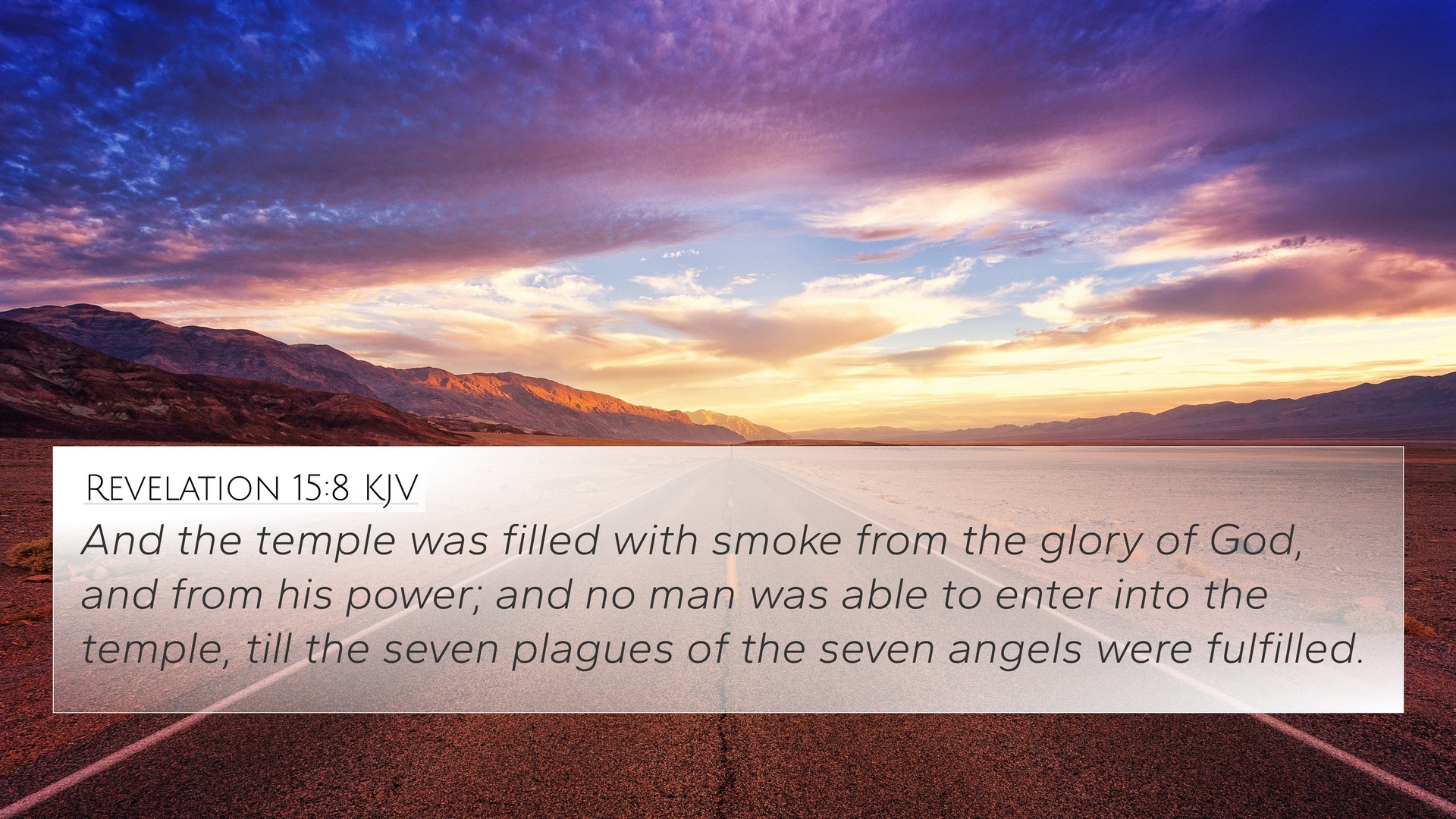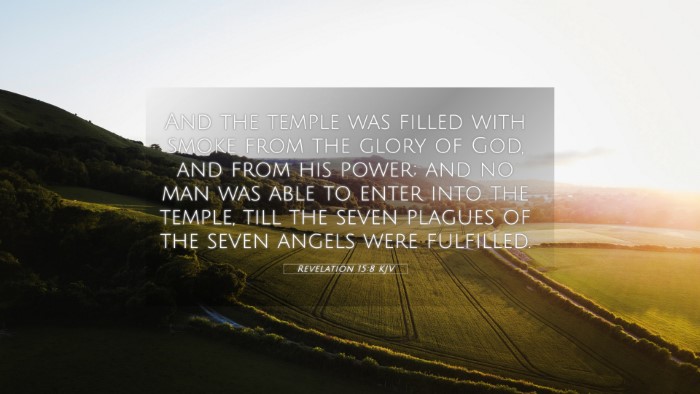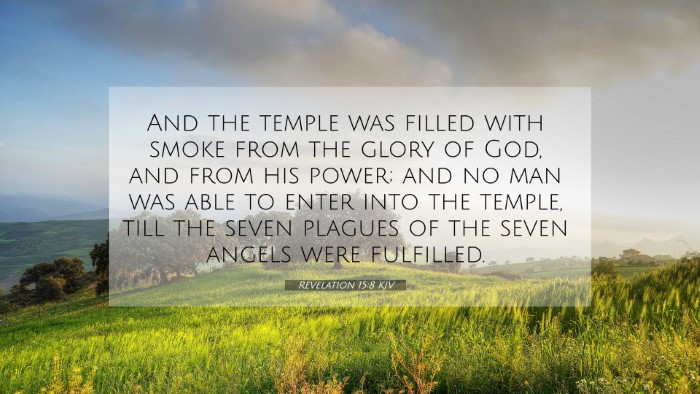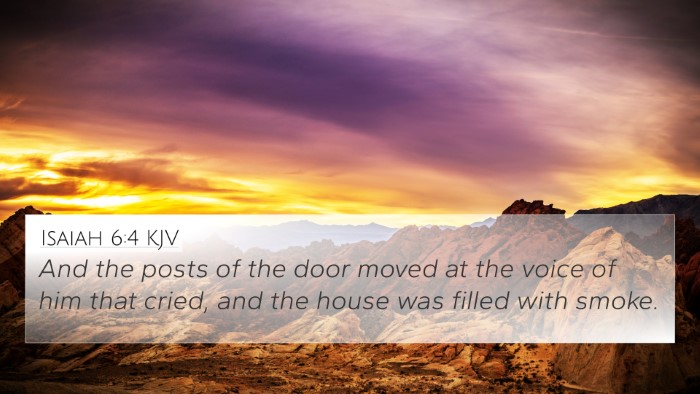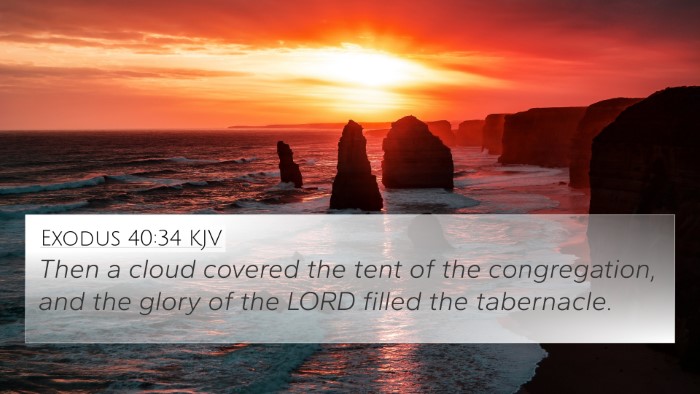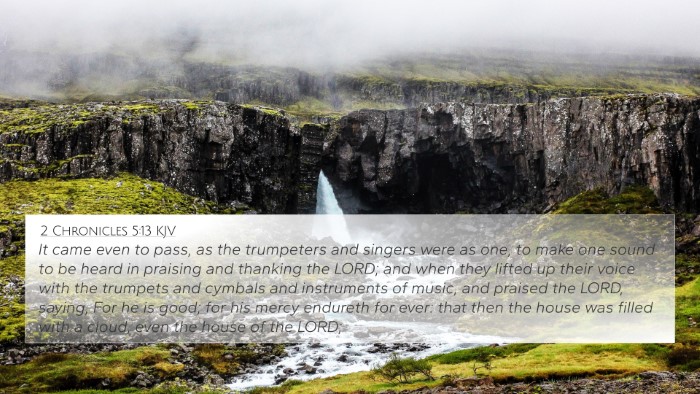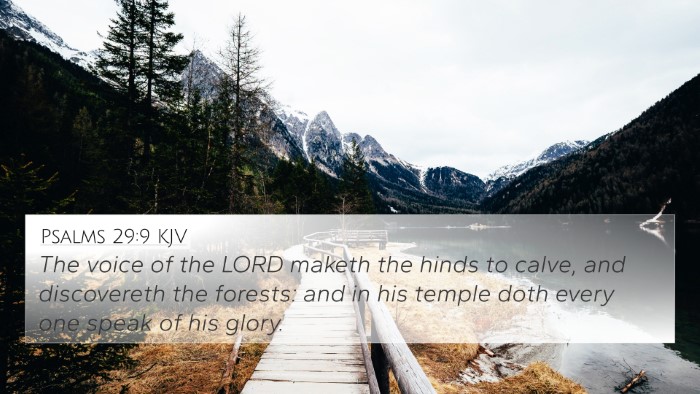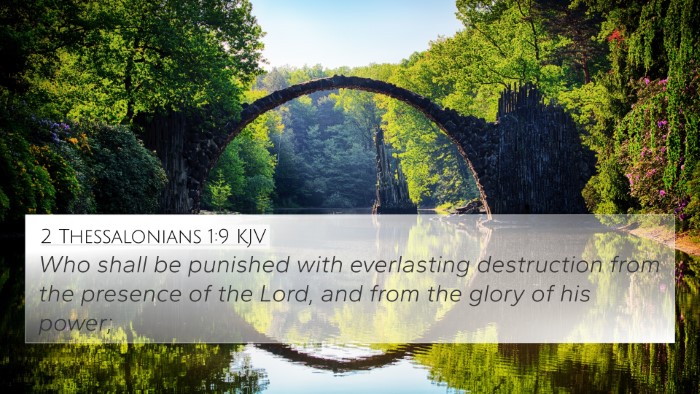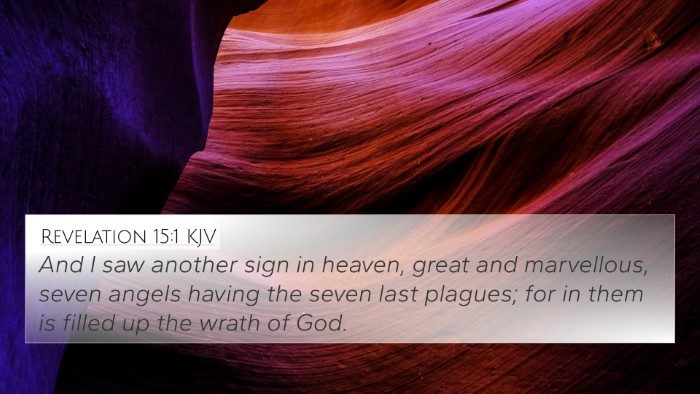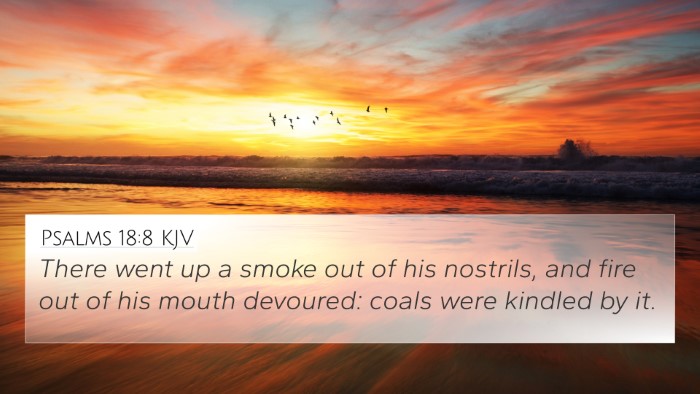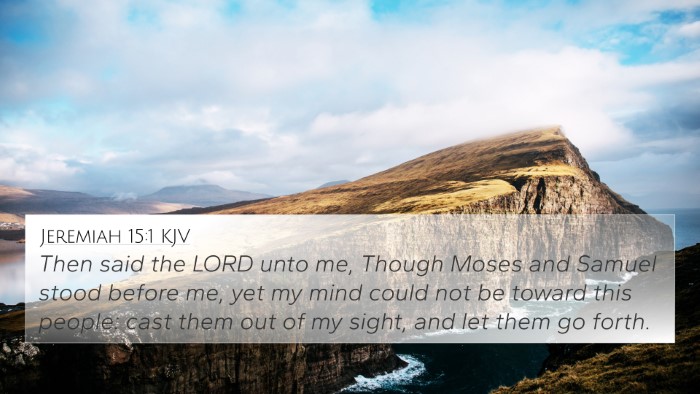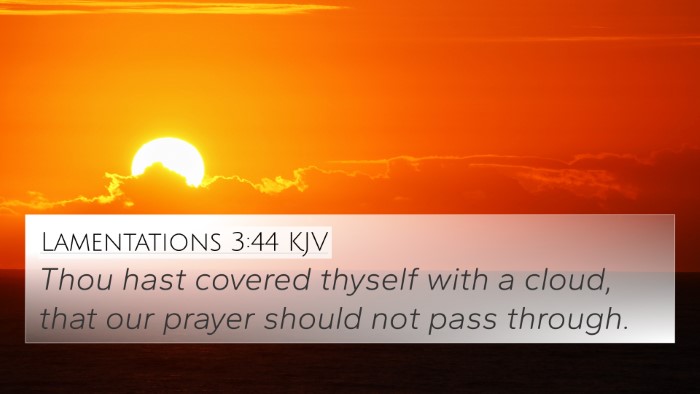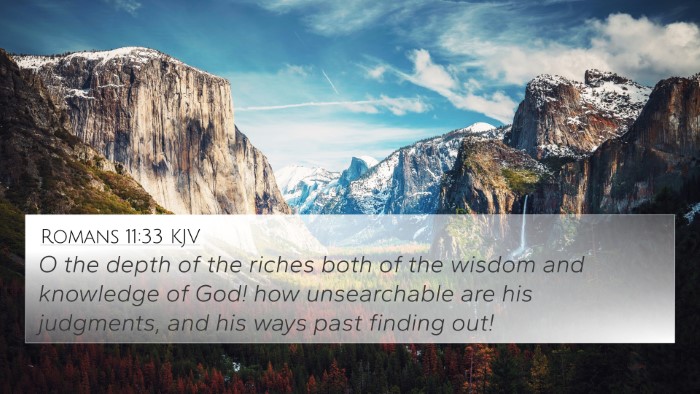Understanding Revelation 15:8
Revelation 15:8 reads:
"And the temple was filled with smoke from the glory of God, and from his power; and no man was able to enter into the temple, till the seven plagues of the seven angels were fulfilled."
Verse Overview
This verse describes a scene in heaven during the Revelation of John, specifically focusing on the glory and power of God as represented by the filling of the temple with smoke. The "smoke" signifies God's presence and holiness, reminiscent of the Old Testament encounters with divine glory.
Commentary Insights
- Matthew Henry: Emphasizes the glory of God that cannot be approached without reverence. The filling of the temple with smoke symbolizes God's overwhelming majesty and the seriousness of the impending judgments represented by the plagues of the angels.
- Albert Barnes: Notes that the smoke obscures the entrance, indicating that human access is denied at this time. This was a moment of divine judgment, highlighting the separation between God’s holiness and human frailty.
- Adam Clarke: Suggests that this act of being barred from the temple reflects God's judgment and the necessity for the fulfillment of divine purposes before any communion or intercession can take place.
Theological Implications
The verse serves to underline several theological themes:
- The Holiness of God: God's presence is so powerful that it renders the surroundings unapproachable by humans.
- Divine Judgment: The seven plagues signify a completion of judgment, reinforcing the idea that God's decisions are final and appointed.
- The Uniqueness of Revelation: Unlike other instances in Scripture, this moment is set apart due to the severity of what is to come.
Scriptural Cross-References
Revelation 15:8 is interconnected with several key verses in the Bible:
- Exodus 19:18: "And mount Sinai was altogether on a smoke, because the Lord descended upon it in fire..." - This verse reflects the divine presence manifesting as smoke.
- Isaiah 6:4: "And the posts of the door moved at the voice of him that cried, and the house was filled with smoke." - A similar scene of God's glory filling the temple.
- Luke 1:19: "And the angel answering said unto him, I am Gabriel, that stand in the presence of God..." - The aspect of angels standing in the presence of God relates to the seven angels mentioned in Revelation.
- Hebrews 9:8: "The Holy Ghost this signifying, that the way into the holiest of all was not yet made manifest..." - Reflects the access to God being limited.
- Revelation 14:10: "The same shall drink of the wine of the wrath of God, which is poured out without mixture into the cup of his indignation..." - Points to the judgment and nature of God’s anger.
- Revelation 16:1: "And I heard a great voice out of the temple saying to the seven angels, Go your ways, and pour out the vials of the wrath of God upon the earth." - The connection to the plagues and the execution of God’s judgments.
- Exodus 40:34-35: "Then a cloud covered the tent of the congregation, and the glory of the Lord filled the tabernacle." - Demonstrates the physical manifestation of God's glory in the Old Testament.
Connecting Themes
Understanding Revelation 15:8 involves recognizing the broader context and themes present in Scripture:
- Thematic Connections: The themes of God's glory, judgment, and holiness manifest throughout both the Old and New Testaments.
- Inter-Biblical Dialogue: There’s an ongoing conversation between the experiences of the Israelites in the Old Testament and the revelations given to John in the New Testament.
- Bible Verse Parallels: Analyzing connections between verses like Exodus 19:18 and Isaiah 6:4 enriches our understanding of God's nature across the biblical narrative.
Tools for Bible Cross-Referencing
To further explore the connections between these scriptures, various tools and methods can be utilized:
- Bible Concordance: These can assist in finding specific keywords and themes relevant to a verse.
- Bible Cross-Reference Guide: Guides can show thematic and textual relationships between different verses.
- Cross-Reference Bible Study: Engaging in systematic study by referencing related texts can deepen understanding.
- Comprehensive Bible Cross-Reference Materials: These resources compile extensive links between scriptures, offering insights into recurrences of themes and divine principles.
Conclusion
Revelation 15:8 offers a profound glimpse into the majesty and holiness of God, representing a key moment of divine judgment and revelation that demands reflection and reverence. By examining this verse through various commentaries and cross-referencing related scriptures, one can gain deeper insight into the nature of God’s glory and His divine plans.
